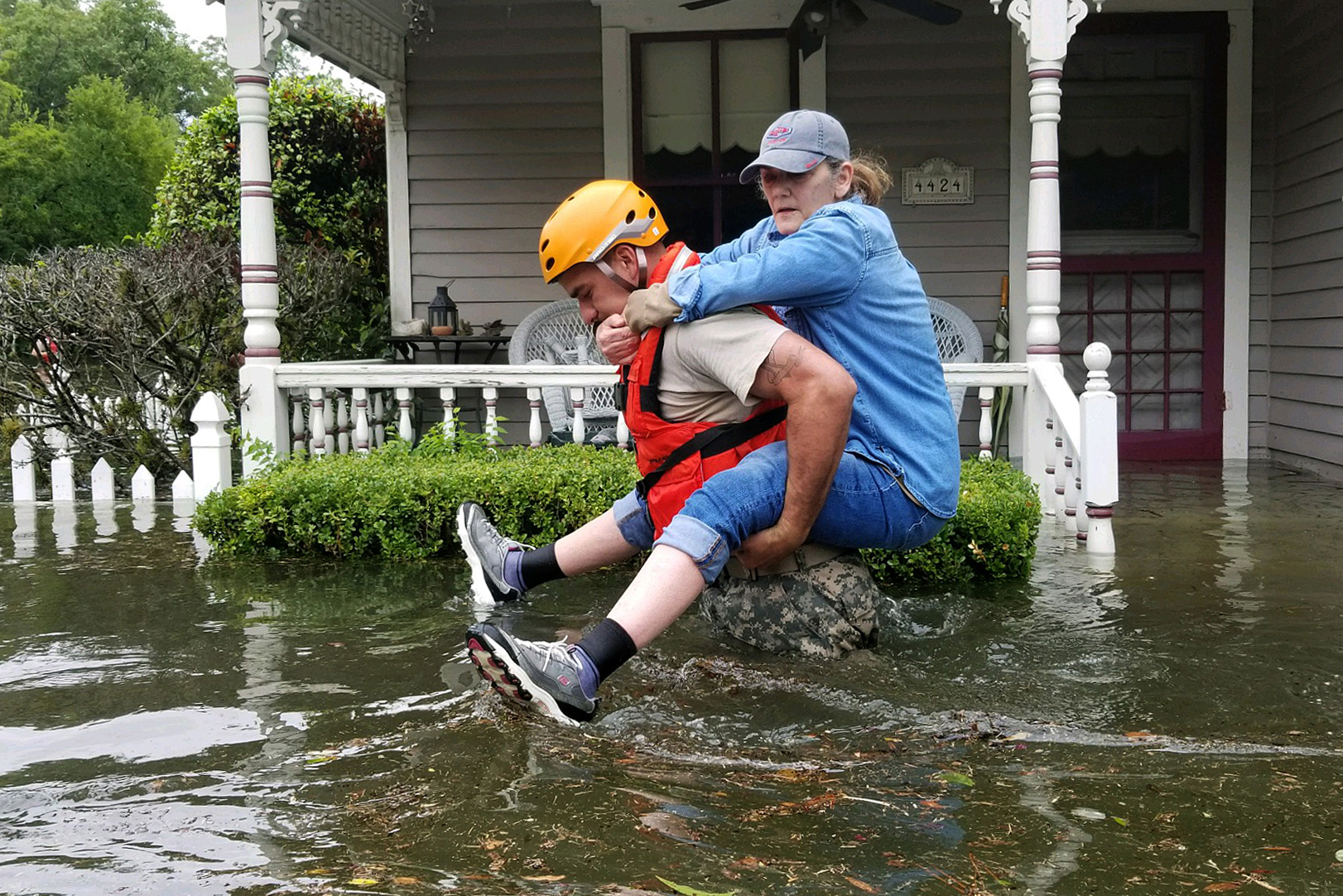

In the aftermath of Hurricane Harvey, people affected by the storm faced a host of physical and mental health problems, including skin infections, respiratory problems, and post traumatic stress disorder. A new study adds to that list: People giving birth in the storm’s wake had an increased risk of medical complications, as did their newborns.
The findings are consistent with previous research on pregnancy and childbirth in the aftermath of big storms, including one analysis that found hurricane exposure during pregnancy increased the chances a newborn would need to be on ventilation. Other natural disasters, like earthquakes and ice storms, have also been linked to complications like early delivery.
“Other people had done some work following hurricanes and other natural disasters which had suggested that there might be some increased risk of maternal and neonatal complications,” says study author Kjersti Aagaard, vice chair of research in the Department of Obstetrics and Gynecology at the Baylor College of Medicine. “Most relied on either small data sets, or having people respond to surveys.” The larger size of this study allowed them to get a more robust look at the impact of the storm.
The team used data from an existing database which collects information from women delivering at two Texas hospitals. The survey began including questions about Hurricane Harvey in the fall of 2017. The study compared over 3,800 women who gave birth within 280 days (or about 9 months) after Hurricane Harvey to women who gave birth at those hospitals between August 2011 and August 2017 (no other major hurricanes occurred in that window). They looked for medical issues in both mothers and newborns including whether mothers needed blood transfusions or had bacterial infections, and whether newborns needed to be on ventilators or had seizures, for example.
Before the storm, 11.5 percent of mothers had some sort of complication, and after the storm, 14.7 percent of mothers did—an increase of 27 percent. For newborns, rates of complications and medical conditions went up by 50 percent.
“What the study does suggest is that both first responders and medical personnel should be aware that pregnant women exposed to these kinds of conditions are at increased risk and that they and their newborns may require a higher level of care than would otherwise be the case,” wrote Janet Currie, co-director of the Center for Health and Wellbeing at Princeton University, in an email.
By extending the study population out to women who gave birth as far as 280 days after the storm, the team was able to capture women who were very early in their pregnancy when Harvey hit, as well as those who were farther along. The large effect of the storm was surprising, Aagaard says. “The robustness stood out,” she says.
The change in risk of maternal complication was the greatest in women of lower socioeconomic status. “That surprised us a bit,” Aagaard says. Women who saw more impact of the storm on their homes and possessions, though, did not have a higher risk for complications. There are two potential interpretations for that result, she says. Even though multiple people experienced the same event, they might not all perceive it in the same way. And secondly, the overall complication rate and the population-level effect of the storm may have been high enough that the degree people were affected might not have mattered.
The reasons for the increased rate of complications after Harvey is still unclear, and this study did not address that particular question. A lot of the research on the impact of disaster on pregnancy points to the way it can increase stress levels, and stress is linked to poor outcomes during and after pregnancy. But the team is also looking at how exposure to environmental chemicals following storms like Harvey might contribute to complications, Aagaard says. “It’s something we’re actively pursuing.” They’re looking, for example, at polycyclic aromatic hydrocarbons, a type of pollutant that’s linked to preterm birth and can be disturbed from the seafloor during major storms. More data and studies that focus on these chemicals, especially ones that search for a mechanism through which the substances affect proper bodily functioning, is key.
Untangling the amount stress or environmental factors might contribute to the risk of complications is important as researchers work to figure out how to prevent them. “Each would have different interventions,” Aagaard says. While this particular study does not offer solutions, it points to the importance of continuing to look for one, she says. “We may be able to prevent quite a few preterm births, and other complications of pregnancy, by addressing whatever the underlying association with the hurricane is.”